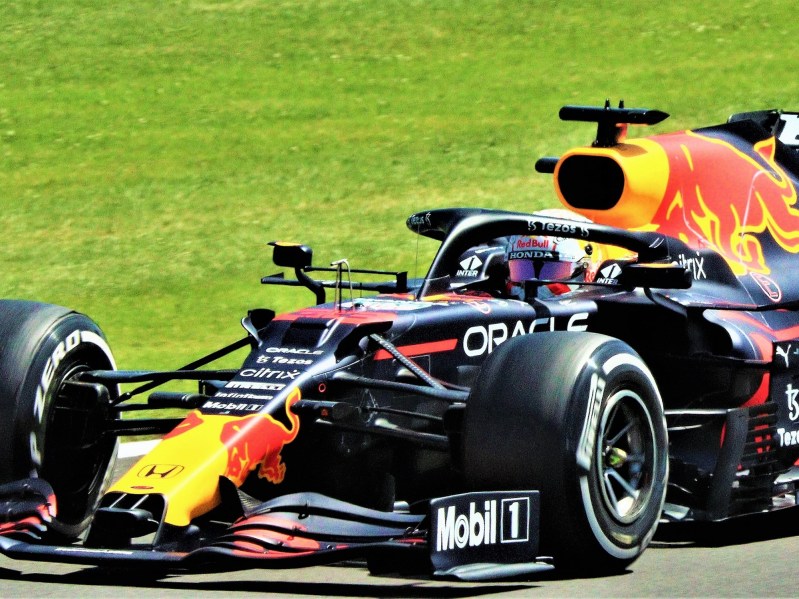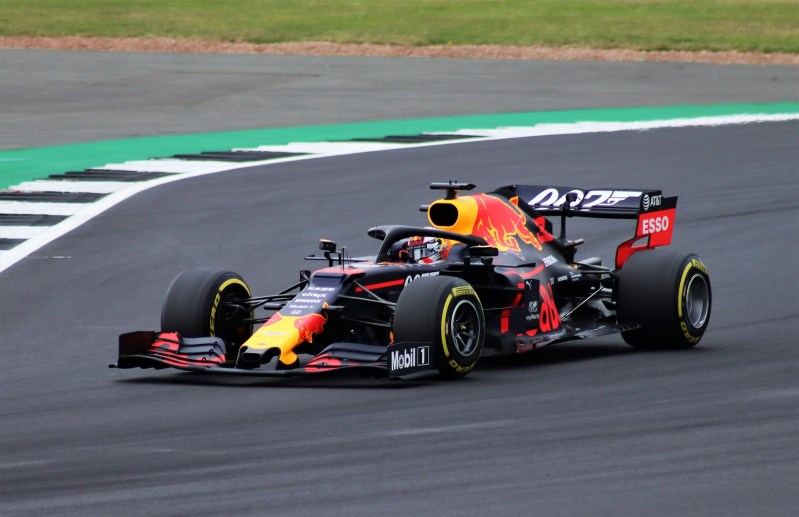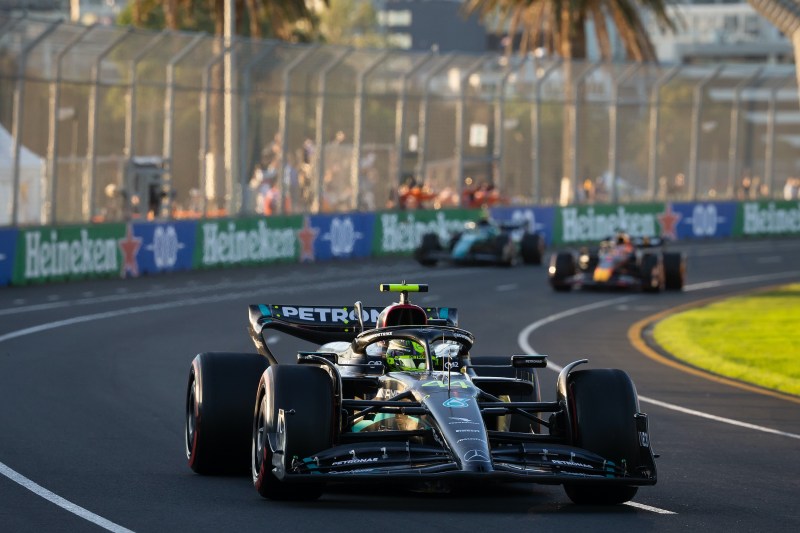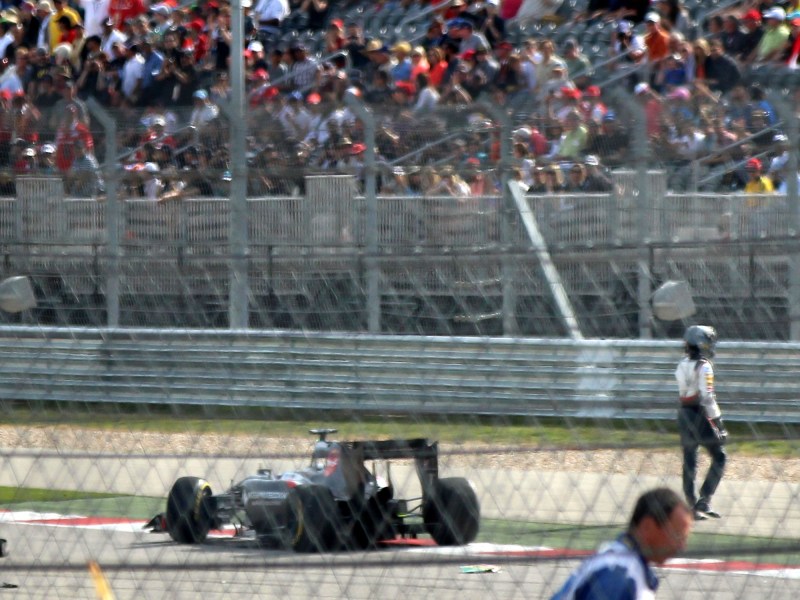Watching F1 Grand Prix races, it’s only natural to wonder how drivers often walk away uninjured following the frequent, dramatic crashes. F1 racing blends significant danger with the extreme excitement of race cars that can reach speeds greater than 220 mph. Since F1 racing began in 195o, 52 drivers have died in crashes, which is a dreadful number, but why isn’t the F1 death toll even higher?
The answer to that morbid question is complex. Safety measures implemented in the past 73 years have significantly improved the chances of surviving crashes. The number of F1 racing deaths decreased from 15 fatalities in the 1950s and 14 in the 1960s to 2 F1 deaths in the 2000s and 3 in the 2010s. There have been no F1 fatalities in the 2020s.
The heartening reduction in the F1 crash mortality rate is due to multiple factors. Protective driver gear, race car design and components, and racetrack safety measures, plus evolving FIA rules and regulations all add to the chances that an F1 driver will emerge unharmed from a horrific crash. Read further for brief explanations of the elements that keep F1 drivers safe.

F1 drivers suit up with protective gear
The first level of protection for F1 drivers is also the closest and includes what they wear and attach to their bodies.
F1 helmets pass tests for much more than impact resistance
In 2018, the FIA, the F1 racing governing organization, announced FIA 5560-2018, a new helmet standard that was mandatory starting with the 2019 F1 racing season. The 5560-2018 standard extended the front of the helmet 10 mm lower to protect the driver’s head and neck.
The new standard also specified 14 tests helmets must pass to be approved for F1 drivers. The new tests measured impact deceleration velocity, ballistic protection, crush resistance, shell and visor penetration, visor coating, chin strap and chin guard retention, impact and crush resistance, overall helmet strength, uniformity, and flammability.
Fire suits and birthday suits
F1 drivers must wear fire-resistant everything, including underwear, boots, gloves, balaclavas, and racing overalls. Clothing breathability matters, too, because F1 cockpits get hot even on cool days, and heat stroke, heat exhaustion, and dehydration are all dangers during an F1 event.
Smart gloves check the air in there
F1 drivers wear gloves that use optical sensors to test and transmit pulse oximetry level (oxygen content in the blood) via Bluetooth to F1 medical staff. The smart gloves provide medical status data to medical and rescue personnel when a driver is in a crash.
Keep your head on your shoulders with a HANS device
Mandatory for F1 drivers since the 2003 season is the Head and Neck Support (HANS) device. The HANS safety collar is worn beneath the F1 driver’s shoulder belt and attaches to the helmet. If the driver has a frontal crash, the HANS device spreads the impact pressure across the driver’s torso. Before the HANS device was invented, drivers often died from fractured skulls resulting from crash impacts when the shoulder belt secured the body, but the driver’s head kept moving.

F1 car construction safety features
F1 race cars must conform to strict regulations and specifications, including minimum weight for the entire vehicle, which includes the driver, driver gear, and fuel. Advanced composite materials that are lightweight, flexible, and extremely strong are essential in keeping weight down without compromising driver safety. The following safety elements are mandatory with all F1 race
The survival cell is crucial
An F1 race car’s wheels and wings can fly off in a crash, and they often do, but the core part of the race car, the survival cell, is crucial to driver safety and survival. Teams typically use carbon composites to create survival cells that are thin, lightweight, and most importantly, strong enough to protect the driver in the event of a crash. Survival cells have built-in fire suppression systems that can be triggered remotely or by the driver. There’s also a damage sensor in the cell wall that alerts the rescue team if the shell has a brutal impact.
Side impact structures are like race car hip protectors
Many vehicle safety features are designed for frontal collisions, but in F1 races, as with ordinary passenger vehicle traffic, side-impact collisions can also be deadly. Beginning with the 2014 F1 racing season, all F1 race cars have side impact systems designed to lessen the force of a collision on the side and protect the driver, regardless of the specific angle. Side impact systems mounted on each side of the race car consist of carbon fiber tubes that crush progressively to absorb impact.
Halo devices aren’t just for angels
Since the 2018 F1 season, all F1 cars are fitted with a Halo device. F1
Six points of safety with F1 seat belts
F1 cars have six-point safety harnesses with multiple adjustments to fit individual driver body sizes and shapes. Various F1 circuit setups require additional adjustment if a driver prefers to sit higher or lower. The seatbelts have Kevlar straps and titanium buckles. FIA track officials inspect the seatbelts of every participating F1 race car before each event, checking the seatbelt’s expiration date and looking for wear and tear.

Grand Prix racetrack circuit safety measures
Formula 1 World Championship Grand Prix races take place on circuits around the world, and no two circuits are alike. A few races are held on public streets closed for the occasion, but most Grand Prix races run in track areas with spectator stadiums and other permanent, purpose-built facilities. The safety features may differ among circuits, but F1 tracks often have run-off areas, gravel traps, and impact absorption barriers to minimize injury and damage to drivers and cars.
F1 run-off areas won’t take you higher
Driving in mountainous areas, you may have noticed truck run-off areas on lengthy descents. Truck run-offs are safety zones for trucks with overheated and failed brake systems. Truck run-off areas are typically artificial ascents that run parallel to the road and are wide and long enough to slow an out-of-control truck to a gradual stop.
You won’t find ascending run-off areas around F1 racetracks, but many tracks have flat run-off areas intended as buffer zones between the racetrack and viewing stands or barrier walls. High F1 race car speeds don’t allow many cars that leave the track to stop before hitting walls or barriers, but any slowing can lessen the impact force.
Gravel traps, for better or worse
A racetrack gravel trap is similar to a flat, fixed-surface run-off area, but has an approximately 10-inch top layer of small stones that stop a moving vehicle faster than a flat, fixed surface due to the added resistance. Gravel traps are controversial because F1 drivers want to get back on the track whenever possible if they’re not injured and their cars aren’t damaged. However, if they get stuck in a gravel trap, they’re out of the race.
Impact absorption barriers – where race car tires go to die
F1 races worldwide use many impact protection barriers to separate the racetrack from spectators. The earliest barriers were used to protect spectators from cars that left the track, while today, the barriers are used to minimize crash impact on the vehicle and driver. The most common barriers on F1 tracks today are old-school tire barriers and Tecpro barriers, although some circuits use Armco W-shape steel barriers or SAFER barriers.
Tecpro barriers consist of large blocks of polyethylene connected by nylon straps. Armco barriers are often used on public highways because of their effectiveness and low space needs. Steel and Foam Energy Reduction (SAFER) barriers place energy-absorbing foam blocks behind an outer steel wall attached to an existing structure or inner wall.
Tire barriers for racetracks answer what happens to used race car tires. Tire barriers consist of continuous rows of old race car tires stacked three or more high on their sides around the track’s perimeter. Some tire barriers have three parallel rows of stacked tires within walls. The tires aren’t visible from the track.
Each of the 20 drivers in an F1 World Championship Grand Prix is allowed 13 sets of four racing tires for the entire weekend event. So, at 52 tires per 20 drivers, theoretically, that means there are 1,040 tires ready for disposal at the end of each race. Multiply by the 22 race events of the 2023 F1 season, and then consider what to do with 22,880 used Pirelli F1 tires. Using them to make safety barriers sounds reasonable.

FIA F1 race regulations
The Fédération Internationale de l’Automobile (FIA) motorsports rules-making organization is responsible for creating, managing, and enforcing rules and regulations for F1 racing. The FIA’s primary concerns are fostering competition, fairness, and safety. To a large extent, anything that keeps F1 drivers safe falls under the FIA’s purview. In addition to the safety elements noted above, the FIA controls two additional safety-related components: the driver extraction test and the F1 Accident Data Recorder system.
The driver extraction test is a here-and-now safety feature
If an F1 driver crashes, it’s imperative they can exit the race car quickly. The FIA F1 2023 Technical Specifications for the F1 race car cockpit require that starting from the usual position with seatbelts fastened and wearing the helmet and other standard safety equipment, the driver can remove the steering control and exit within 7 seconds and then replace the steering control within a total of 12 seconds. While drivers may not always be able to extract themselves without help, the FIA’s stress on fast extraction underscores the importance of getting away from a crashed car as soon as possible.
The F1 black box system helps the next guy
In addition to many other sensors in an F1 race car, drivers have accelerometers in their earbuds. The accelerometers measure head movement force. There is also a high-speed camera built into the Halo structure that focuses on the driver’s face. Data from the sensors and camera feed to an Accident Data Recorder (ADR) in the car. The ADR serves like an aircraft black box to collect data that can be used after a crash by analysts who study what caused the accident. In the case of the FIA and the ADR, data from this black box will be used to determine safety standards for future F1 seasons.




